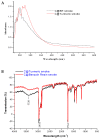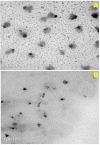A Fumigation-Based Surface Sterilization Approach for Plant Tissue Culture
- PMID: 33668989
- PMCID: PMC7967719
- DOI: 10.3390/ijerph18052282
A Fumigation-Based Surface Sterilization Approach for Plant Tissue Culture
Abstract
Plant tissue culture has led to breakthroughs in understanding and applying the fundamental knowledge towards harnessing more from plants. Microbial contamination is one of the serious problems limiting the successful extrapolation of plant tissue culture practices. Sources of in vitro contamination include culture containers, media, explants, equipment, the environment of the culture room and transfer area, and operating personnel. The successful initiation of in vitro culture mostly depends on surface sterilization of explants because this is the primary source. Usually, surface sterilization is done using chemicals, or toxic nanomaterials, this is the first time such an approach has been demonstrated. Numerous surface microflora attached to plant surfaces grow faster than the cultured explants and release phytotoxic substances into the culture media, hindering positive outcomes. In the current work, for the first time, the applicability of turmeric and benzoin resin-based fumigation of explants is demonstrated. The results showed that fumigation methods for surface sterilization were promising and could lead to fifty and even 100% contamination-free plant tissue culture. Nanoparticulate carbon was identified in the turmeric and benzoin smoke and coined the key player in the surface sterilization effect. These studies open a whole new avenue for the use of fumigation-based methods for riddance of microbial contamination.
Keywords: antimicrobials; carbon nanodots; fumigation; plant tissue culture; surface sterilization.
Conflict of interest statement
The authors declare no conflict of interest.
Figures






Similar articles
-
Validation of environmental disinfection efficiency of traditional Ayurvedic fumigation practices.J Ayurveda Integr Med. 2019 Jul-Sep;10(3):203-206. doi: 10.1016/j.jaim.2019.05.002. Epub 2019 Aug 16. J Ayurveda Integr Med. 2019. PMID: 31427141 Free PMC article.
-
[The sterilization effect of formaldehyde fumigating on the catheter place vertically].Zhonghua Hu Li Za Zhi. 1997 Jul;32(7):373-5. Zhonghua Hu Li Za Zhi. 1997. PMID: 9384036 Chinese.
-
An in vitro analysis of microbial transmission during EUS-guided FNA and the utility of sterilization agents.Gastrointest Endosc. 2006 Nov;64(5):774-9. doi: 10.1016/j.gie.2006.06.080. Gastrointest Endosc. 2006. PMID: 17055873
-
[Research development of harmful substances and its harm of traditional Chinese medicine after sulfur fumigation].Zhongguo Zhong Yao Za Zhi. 2014 Aug;39(15):2801-6. Zhongguo Zhong Yao Za Zhi. 2014. PMID: 25423812 Review. Chinese.
-
The risks and benefits of chemical fumigation in the health care environment.J Occup Environ Hyg. 2011 Feb;8(2):104-12. doi: 10.1080/15459624.2011.547453. J Occup Environ Hyg. 2011. PMID: 21253983 Review.
Cited by
-
Enhancing In Vitro Regeneration in Three Sweet Potato Genotypes: Interplay Between Disinfectant, Explant Age, and Genotype.BioTech (Basel). 2025 Aug 19;14(3):63. doi: 10.3390/biotech14030063. BioTech (Basel). 2025. PMID: 40843786 Free PMC article.
-
Isolation, Identification and Pollution Prevention of Bacteria and Fungi during the Tissue Culture of Dwarf Hygro (Hygrophila polysperma) Explants.Microorganisms. 2022 Dec 15;10(12):2476. doi: 10.3390/microorganisms10122476. Microorganisms. 2022. PMID: 36557729 Free PMC article.
-
Tissue Culture Innovations for Propagation and Conservation of Myrteae-A Globally Important Myrtaceae Tribe.Plants (Basel). 2024 Aug 13;13(16):2244. doi: 10.3390/plants13162244. Plants (Basel). 2024. PMID: 39204680 Free PMC article. Review.
-
Optimization of callus induction and proliferation of Paeonia lactiflora Pall. and Agrobacterium-mediated genetic transformation.Front Plant Sci. 2022 Dec 16;13:996690. doi: 10.3389/fpls.2022.996690. eCollection 2022. Front Plant Sci. 2022. PMID: 36589115 Free PMC article.
References
-
- Thorpe T.A. History of plant tissue culture. Methods Mol. Biol. 2006;318:9–32. - PubMed
-
- Reed B.M., Wada S., DeNoma J., Niedz R.P. Mineral nutrition influences physiological responses of pear in vitro. In Vitro Cell. Dev. Biol. Plant. 2013;49:699–709. doi: 10.1007/s11627-013-9556-2. - DOI
-
- Leifert C., Morris C.E., Waites W.M. Ecology of microbial saprophytes and pathogens in tissue culture and field-grown plants: Reasons for contamination problems in vitro. Crit. Rev. Plant Sci. 1994;13:139–183. doi: 10.1080/07352689409701912. - DOI
-
- Leifert C., Cammota H., Waites W.M. Effect of combinations of antibiotics on micropropagated Clematis, Delphinium, Hosta, Iris and Photinia. Plant Cell Tissue Organ Cult. 1992;29:153–160. doi: 10.1007/BF00033621. - DOI
Publication types
MeSH terms
Substances
LinkOut - more resources
Full Text Sources
Other Literature Sources

